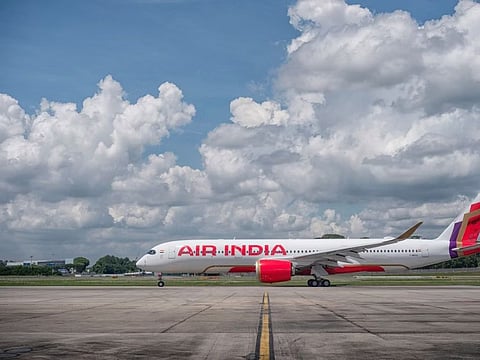Why Air India is taking so long to get its act together
India’s only full-service carrier is unable to impress even after the Tata Group bought it

The bosses at Indigo, the airline with a 65% market share in India, must be rather pleased with themselves these days. Air India seems to be getting so much bad press that Indigo’s often horrid customer experience has been subdued in the news. It’s as if Air India is competing hard for the worst airline experience, despite being the only full-service carrier today.
No less than a cabinet minister, Shivraj Singh Chouhan, complained on social media about broken seats. The seat in question was a ‘sunken’ seat, meant to be uncomfortable by design, shifting mid-air, only because it is light and reduces fuel costs.
Passengers who buy business class tickets sometimes find themselves downgraded to economy. One passenger found his seat was given to a pilot. He was lucky, at least he was not denied boarding. Thousands of passengers on Air India or its low-cost sister, Air India Express, have been denied boarding because the flights were over-booked. Of course, they were compensated, but the hassle is nonetheless felt by passengers.
Rarely is an Air India flight on time, and sometimes passengers find themselves stuck in the cabin without air-conditioning for hours as the flight refuses to take off.
By far the worst experience is on international flights. Especially on direct flights between India and the United States, the social media outrage from passengers is destroying Air India’s reputation before it can be built. The founder of a venture capital firm flew first class from Chicago to Delhi and here’s how he described his experience: “The IFE (in-flight entertainment) was down for the entire flight. The first class was in poor condition—unclean, with leftover food and trash still in the cabin, and everything looked worn out or broken.” The airline had to refund him the fare of over INR 500,000.
At least he reached Delhi. In Phuket, Thailand, 100 passengers found their flight delayed by over 80 hours.
What went wrong?
People are surprised for two reasons. One, we thought Air India would get a lot better after the trusted Tata Group bought it from the Indian government in January 2022. Air India was founded in 1932 by JRD Tata of the Tata group and was nationalised in 1952. So the Tatas buying Air India from the government is not just a business decision but one of prestige and homecoming. Secondly, the Tatas founded Vistara airlines in 2013, which was a universally loved airline. It merged with Air India last year.
Instead of improving after privatisation, why is it that Air India seems to have become worse rather than better?
We need to cut them some slack here because the problems are less about mismanagement and more about supply chain issues. The Tata Group is lavishly funding the expansion and refurbishment. Yet, the Covid-19 supply chain interruptions along with the crisis at Boeing have made things difficult for airlines across the world. This has been particularly bad for Indian airlines because demand has far outstripped supply. Flight prices have been going up because there simply aren’t enough planes.
Air India, like Indigo and Akasa, has placed huge aircraft orders but the planes have started coming only in a trickle. Supply chain issues affect the ability to retrofit airlines as well. Even if you get all the new seats and parts, there’s a shortage even of factory slots where the retro-fitting can take place.
The airline had promised a turnaround in 5 years, of which half the time is already over and they have not been able to meet their milestones due to supply chain issues. They’re now probably regretting having made ambitious announcements.
The airline has been clever to have deployed the Vistara planes on lucrative metro routes and not change the airline experience yet. Last year, it became the first Indian airline to deploy the advanced Airbus A350 planes. These currently fly to London Heathrow, New York JFK and Newark.
One plane at a time
Air India currently has 210 aircraft, and Air India Express has around another 90. They expect to induct only another 100 by 2027. That is far from enough. They ordered 470 planes in 2023 (250 from Airbus and 220 from Boeing). In 2024 they ordered another 100 planes from Airbus.
It is estimated that India needs 1,700 new aircraft by 2030 to add to the current fleet of 700 planes. The world’s largest country by population, and one of the fastest growing economies even on a bad day, needs to make a stronger case to persuade Airbus and Boeing to start assembling planes in India.
The pain points in Indian aviation are not going to disappear overnight, but one new plane at a time. The future, however, is rather bright for Air India. With backing from Tatas and Singapore Airlines, there should be little doubt that Air India will one day look and feel a lot like Vistara. That day could sadly be years away.
Sign up for the Daily Briefing
Get the latest news and updates straight to your inbox



